Here are 10 old-house-specific ways to make your home more comfortable and energy efficient, along with bonus tips on tune-ups and swaps.
Turn it Off (or Down)
We’ve heard the drill for years. One of the simplest ways to save energy and cut electric bills is to turn off lights and appliances when not in use. That goes for energy-hogging appliances like flat-screen TVs and internet modems, too. (You may want to invest in a timer that reboots both shortly before the household wakes up.)
That said, more than 40 percent of household energy consumption is generated by heating and cooling. To keep costs in check, install a programmable thermostat, if you haven’t already. For every degree you cut back on heating or air conditioning over an eight-hour period, you’ll save one percent on your energy bills. These devices can be tricky to install, but once up and running, they allow you to raise or lower temperatures automatically, or with a tap on a smart phone: at night, during the day when no one is home, or when the family is away.
Programmables are also a boon for second homeowners; it’s possible to crank up the AC or heat while you’re en route to your getaway place. Depending on brand and features, a programmable thermostat costs as little as $30 or up to $250.
Keep It Clean
Clean your furnace filter once a month, changing it as needed. Dirt can clog mechanical parts, causing the unit to work harder to generate heat. Vacuum registers and vents regularly.
Roll batt insulation at right angles directly over any existing insulation in the attic to reduce heating bills. Then cut pieces to fit edges.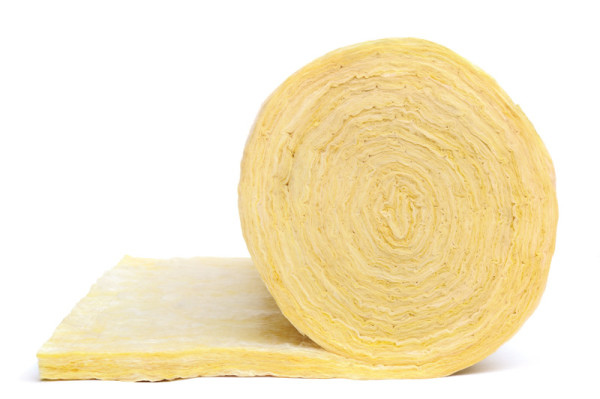
Add Insulation
The easiest way to increase the effective R-value, or thermal resistance, in a drafty house is to add batt or loose insulation between heated and unheated areas—the floor of the attic and underneath floor joists in the basement.
Use a ruler to measure the depth of attic insulation and check behind switch plates to gauge the depth of sidewall insulation. Studies show that adding 3″–12″ of new insulation to an unheated attic can cut heating costs by 20 percent, and cooling costs by 10 percent. Install the new insulation at right angles to the previous layer. It isn’t necessary to use the same type of insulation; you can use the new “no-itch” or poly-wrapped products, which are easier to handle and safer to work with. Similarly, if the basement is unheated, install blanket insulation between exposed floor joists. Add pieces of batt insulation to the area along the top of the foundation where it meets the exterior walls.
Installing sidewall insulation usually requires the help of a specialized contractor. Depending on a variety of factors, your home may be a candidate for loose cellulose or injectable spray foam insulation; both require skill and precision for proper installation.
Heat the house and cook dinner with the same load of wood with M. Teixeira’s Sinatra masonry soapstone heater.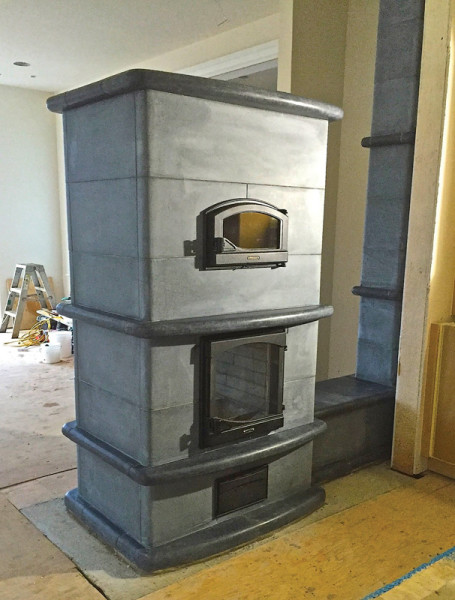
Masonry Heaters
A masonry heater may not sound like a quick energy fix, until you consider a soapstone fireplace large enough to heat an entire house can be set up and ready to go in a week or less.
Similar to the central chimneys of colonial days, masonry heaters are massive enough to store heat for hours and slowly release it when most needed. Soapstone fireplaces, like those from M. Teixeira Soapstone or Tulikivi, for example, burn wood with up to 98 percent efficiency, thanks to internal channels that circulate and then exhaust combustion gases. This allows the stone to retain heat after the fire has gone out, in some cases for as long as 24 hours.
Despite the advantages of these behemoths, they’re not for everyone: there must be a free space large enough and strong enough to support the unit, which weighs between 2,500 and 6,000 pounds. A “compact” unit costs about as much as a new furnace, $5,000 to $6,000.
Get Assessed
Ask your local energy provider for a whole-house energy assessment, or hire a good energy performance company to perform one. (The $300–$500 cost is well worth it.) Use the results to improve energy savings throughout the house.
Hardy spring bronze weather stripping helps seal air leaks around windows. (Courtesy: WindowRepair.com)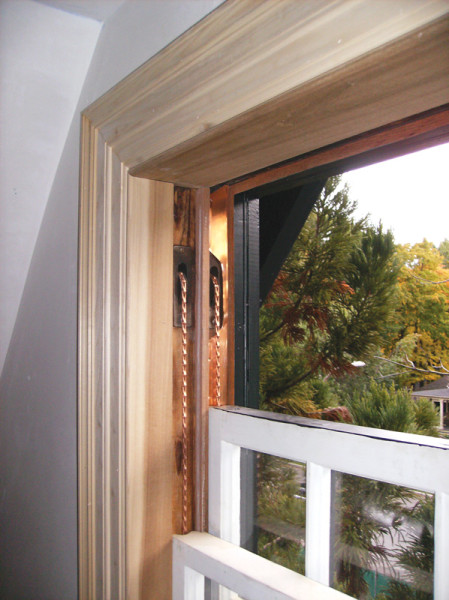
Tighten Up
Much of the heat loss or gain at windows and doors is by infiltration around the perimeter—easily and inexpensively fixed with weather stripping or caulk. Installing spring metal, plastic strip, compressible foam tape, or sealant beads to gaps around windows and doors improves interior comfort by reducing drafts and keeping out moisture. A classic choice is bronze weather stripping, which reportedly can last a hundred years or more.
Since wood windows shrink and expand with changes in temperature and humidity, seal exterior seams with a caulk that shrinks and swells too: Sashco’s Big Stretch is a highly elastic, water-based sealant that moves with wood as it changes with the weather.
Windows that are old, rare, and drafty should be treated to storm windows, which can slash energy costs by 20 percent or more. Choose from “invisible” versions that mount on the interior or exterior. If you don’t mind changing out storms for screens twice a year, there are still companies (and carpenters) who make wood storm windows and matching screens to order. Inquire at a local hardware or window and door supplier in your area.
Wall panel radiators like these from Runtal North America can be tucked out of sight beneath a kitchen island or along baseboards.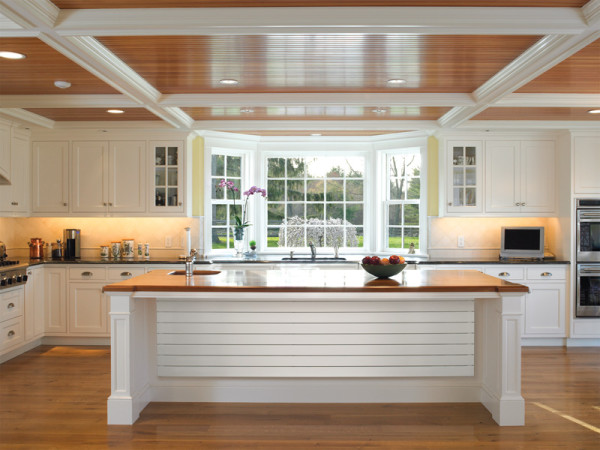
Spot Radiant
Radiant heat isn’t really new: boiler-powered steam and hot-water radiators have been producing radiant heat in homes for nearly 150 years. In recent decades, though, radiant technology has moved beyond these historic whole-house systems to offer spot heating under floors, along walls, even under the driveway.
New technologies, including membrane-thin heating elements, have made in-floor systems easier to install in recent years. Obviously, in-floor systems work best in existing homes as part of a remodel or addition. But there’s no reason you can’t warm up a cold bathroom or bedroom with any of a plethora of products available. Options include eHeat’s wall-mounted electric convection heater (perfect for utility spaces like laundry rooms or baths) to traditional-looking radiators for steam that go anywhere you need them from Runtal North America. Runtal also offers a full line of towel radiators capable of warming a large bathroom—think of them as zoned heaters—and low-profile, flat-panel radiator fins that install along stair railings, under a kitchen cabinet, even in curved spaces. Most can be adapted for electric or hydronic (heat-circulated water) use.
Lopi Stoves’ Flush Wood Plus woodburning fireplace insert comes with a patented ignition system that starts the fire without the need to open the door, helping reduce smoke buildup.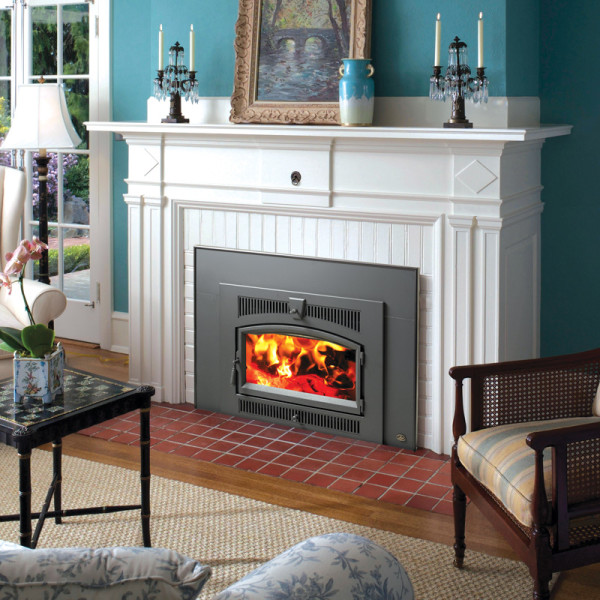
Enclose the Fireplace
Fireplaces are notoriously inefficient for heating. While no one would suggest enclosing an early walk-in hearth with glass doors or a fireplace insert, less historically significant fireplaces might benefit from either treatment.
Of the two, inserts supply the best heat bang for the buck, at an initially higher cost ($4,000 to $5,000 versus $1,000 or more for custom-fitted glass doors). That’s because inserts are in essence wood- or gas-burning stoves that vent through the existing chimney. The best are quiet and efficient, converting wood into fuel at higher temperatures and at a much slower rate than an open-flame fireplace. In cold climates, a particularly efficient wood-burning insert can continue to generate warmth for up to 10 hours on a single load of wood. Wood stoves and inserts can reduce conventional heating costs substantially, particularly if the main source of fuel is electricity.
No need to block up a window; go with mini split heating and cooling units, like this one from Mitsubishi Electric.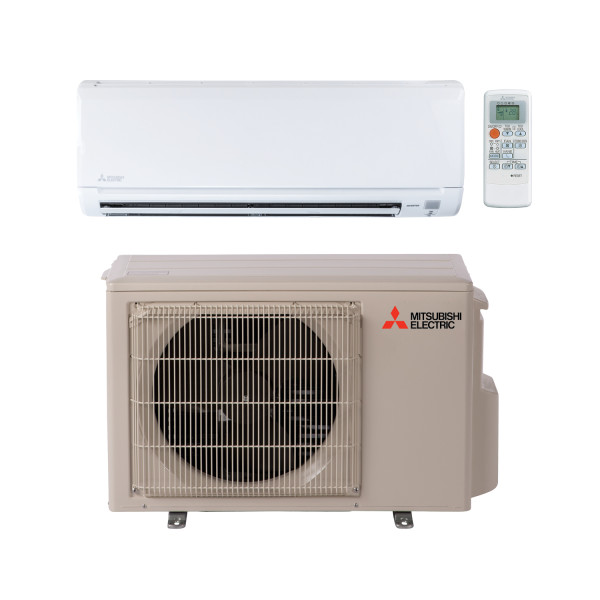
Go Ductless
Ditch those window air conditioners and space heaters and replace them with a ductless “mini split” heating and cooling system. Served by inverters installed outside, these powerful and quiet units install directly on interior walls, delivering warm or cool air to individual rooms without using heating ducts.
One outdoor unit in Fujitsu’s Halcyon mini-split system, for example, can serve up to eight individual air handlers—creating multiple zoned areas in a single house. Many if not all ductless systems are Energy Star certified and can cut heating and cooling costs by up to 30 percent. With installation, a system may cost as little as $2,500.
The only evidence of a mini-duct system like this one from Unico is a small circular vent that blends into the floor.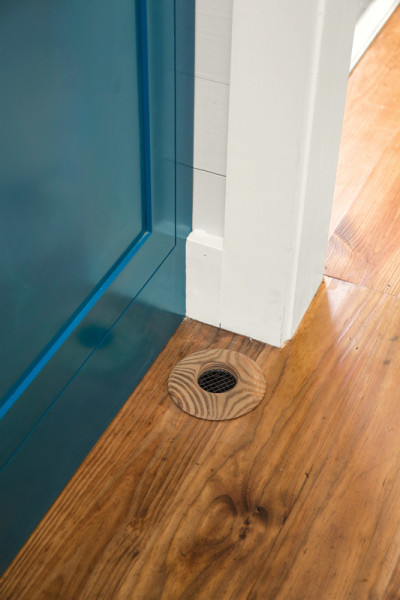
What’s a Mini Duct?
Retrofitting an older home for an HVAC system used to mean destroying original plaster walls and historic trim elements to accommodate ductwork and large air-delivery vents. Companies including Unico, Space Pak, and Hi-Velocity have addressed that problem with small-duct systems that provide year-round, whole-house heating and cooling. These ingenious mini-duct systems pump high velocity air throughout the house by aspiration, creating a quiet, gentle circulation pattern that produces relatively even heat from floor to ceiling.
At 2″ in diameter, the flexible mini-duct tubing is small enough to be routed between studs in walls and in cavities under floors and above ceilings, making this innovative system ideal for houses with inadequate ductwork or no ductwork at all. Already inconspicuous, vents can be dressed up with trimwork that accents or conceals their presence.
A retrofit isn’t cheap: a new mini-duct system for a house on the small side will run $15,000 or more. While homeowners will need a sizeable amount of room in an attic, closet, or mechanical room for the cooling/heating unit, the flexible mini-ducts snake through walls and ceilings to place heat or cool air right where it’s needed.
Resources
Energy Audits/HVAC Design
CMF Engineering curtfreedman.com
Mini-duct Systems
Hi-Velocity Systems hi-velocity.com
SpacePak Hydronics spacepak.com
Unico System unicosystem.com
Mini-splits
Fujitsu General fujitsugeneral.com
Mitsubishi Electric mitsubishicomfort.com
Smart Thermostats
Emerson Climate Technologies emersonclimate.com
Spot Radiant
eHeat eheat.com
Runtal North America runtalnorthamerica.com
Steam Radiators steamradiators.com
Fireplace Inserts & Stoves
Lopi/Travis Industries lopistoves.com
Valor Fireplaces valorfireplaces.com
Masonry Heaters
M.Teixiera Soapstone soapstone-woodstove.com
Tulikivi tulikivi.com
Storm/Insulated Windows
Acoustical Surfaces acousticalsurfaces.com
Adams Architectural Millwork adamsarch.com
Allied Window alliedwindow.com
Arch Angle Windows & Doors archangleohio.com
Architectural Components architecturalcomponents.com
Cooper Windows cooperwindows.com
Indow Windows indowwindows.com
Innerglass Window Systems stormwindows.com
Magnetite magnetite.com
Monray monray.com
Phoenix Window Restoration & Technologies phoenixwindow.net
Sealants/Weather Strip
Sashco sashco.com
William A. Killian Hardware springbronze.com
Ventilation/Window Furnishings
Alameda Shade Shop shadeshop.com
Ann Wallace Prairie Textiles annwallace.com
Americana shutterblinds.com
Handwerk Shade Shop thehandwerkshop.com
Pacific Registers pacificregisterco.com
Reggio Registers reggioregister.com
Shuttercraft shuttercraft.com
Woolen Mill Fan Co. architecturalfans.com







